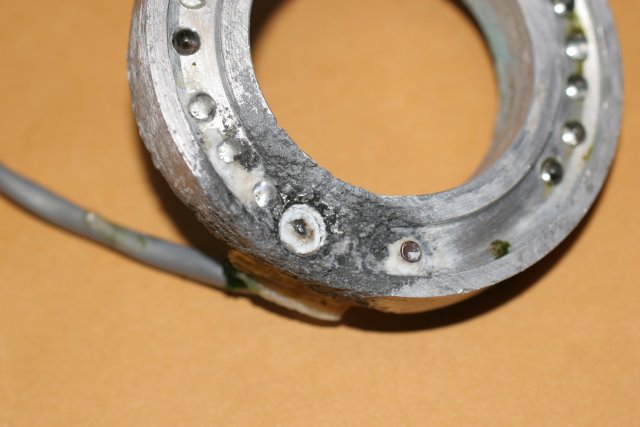Retiring old parts
Pictured above is the infrared light source. It used a set of Agilent Technologies HSDL-4220 30 degree infrared LED's (875nm wavelength). The LED's were set up in 5 banks of 4 LED's arrayed in series with a 10-ohm resistor, with each bank wired in parallel with the others. The whole setup used about 2 amps at 7.5 volts DC to give each LED 100 milliamps.These supplied enough light at night for the low-light sensitive CCD camera to supply a bright clear picture under the darkest of conditions.(see more info here: SnailCam project )
The LED's were mounted in a machined aluminum ring, and the wiring in the backside of the ring was waterproofed using normal 2-ton epoxy. As I said, this arrangement was in the field for 1.5 years before I finally started to have problems.
This picture is of the same ring of lights, when I pulled them out of the field. I believe that the brass bolt I used as a strain relief set off an electrolytic reaction which ate away at the aluminum ring.

At some point, water also began seeping in along the wires, and led to electrolysis at another point on the aluminum ring and somehow created the expansion seen in this second picture.

As bad as this looks, I was amazed to find that two of the five banks of LED's still worked when I hauled it back to the lab. After getting 1.5 years of service out of this setup, I won't hesistate to use this general method again, though a non-conductive plastic ring mount for the LED's might be a nice modification.

<< Home